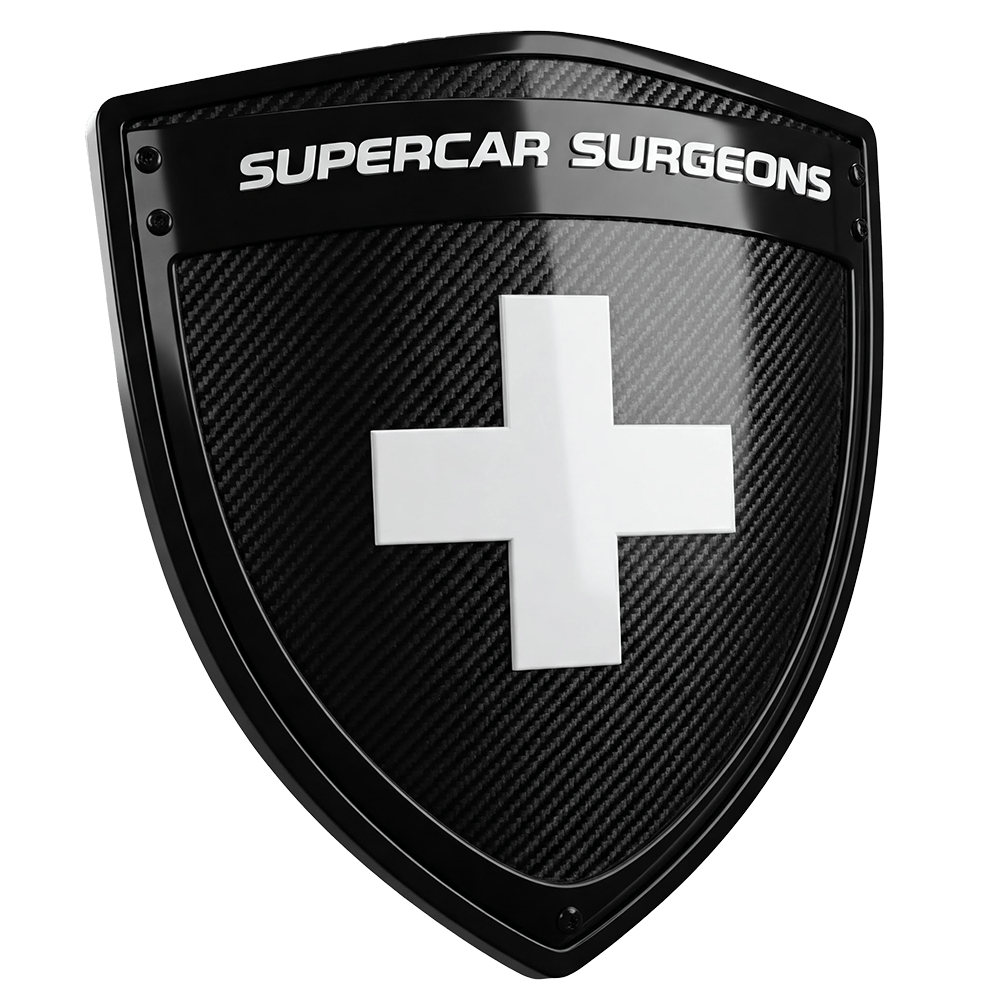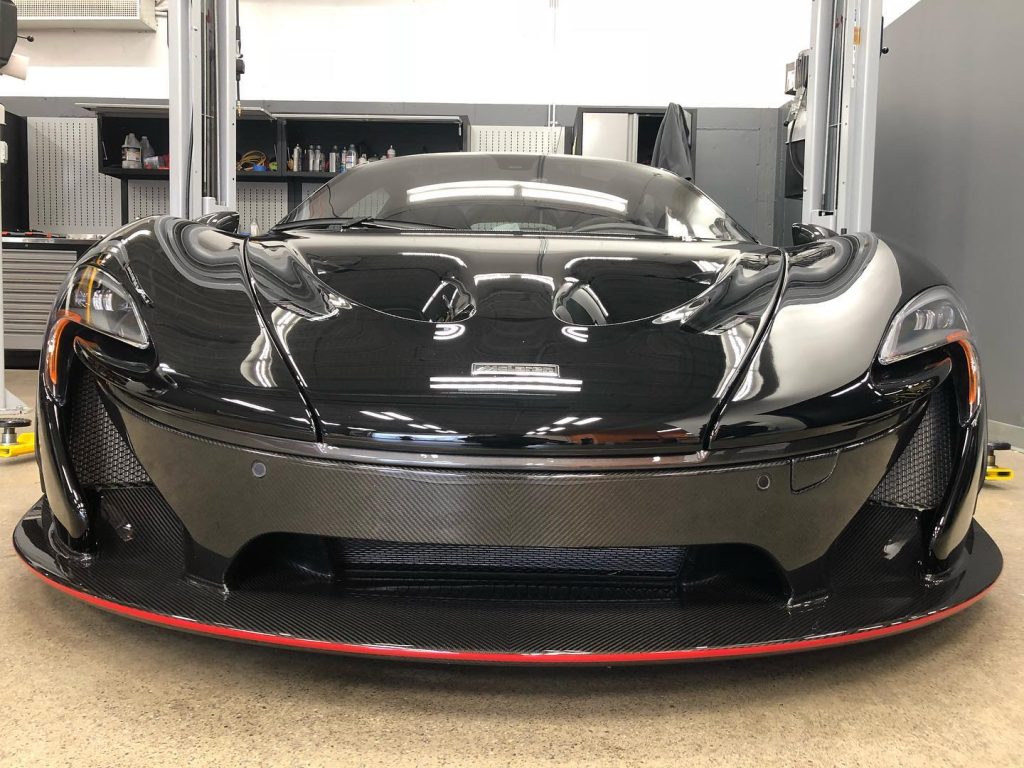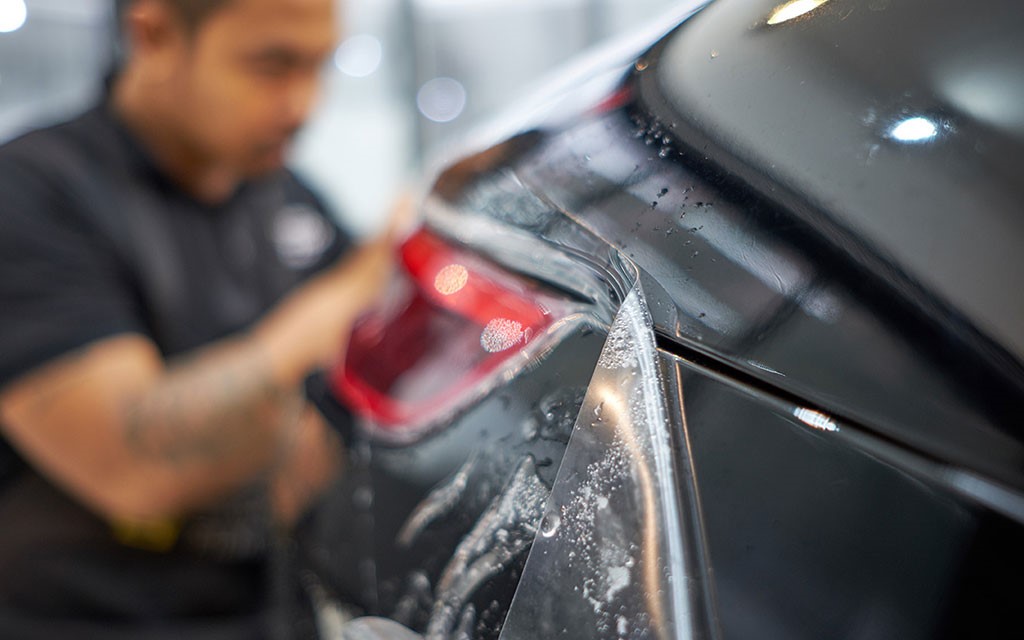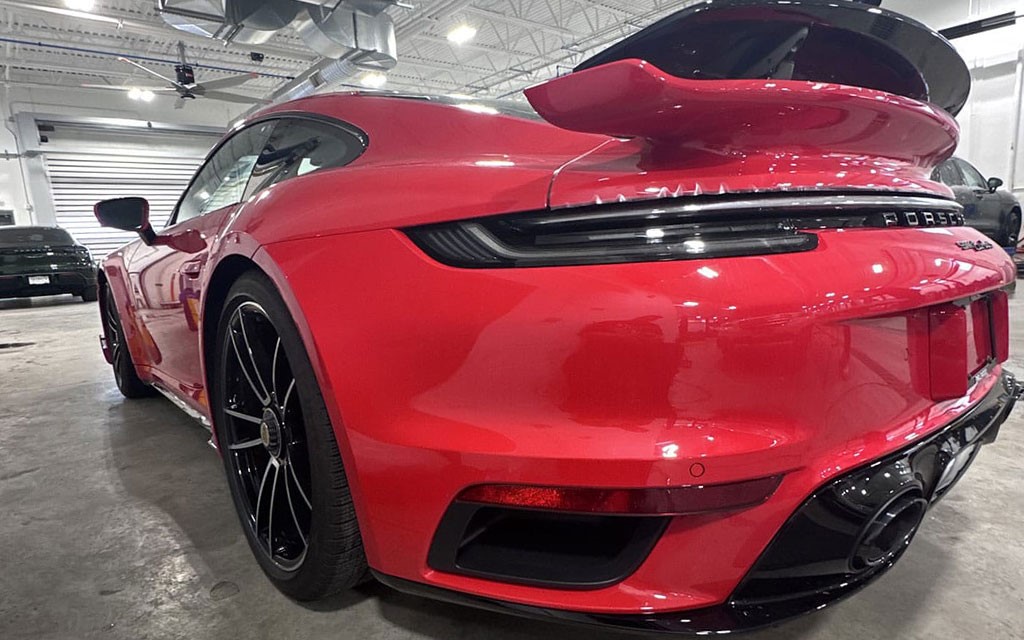Are you searching for the most effective solution to safeguard your vehicle’s pristine paint finish? With the multitude of protection options available in today’s market, determining the ideal choice can become an overwhelming decision for many car enthusiasts and everyday drivers alike.
Among the most prominent contenders in the automotive protection arena, Paint Protection Film (PPF) and Ceramic Coating stand out as industry leaders, each offering distinctive advantages tailored to different protection needs. While both solutions serve the ultimate purpose of preserving your vehicle’s aesthetic appeal, they accomplish this through fundamentally different approaches and technologies. This comprehensive guide aims to dissect the nuances between these two premium protection methods, providing you with the essential knowledge to make an informed decision that aligns perfectly with your vehicle’s specific requirements and your personal preferences.
Table of Contents
Understanding Car Paint Protection Options
When considering how to preserve your vehicle’s exterior finish, it’s essential to thoroughly understand the fundamental differences between Paint Protection Film (PPF) and Ceramic Coating. Although both solutions are designed to protect your car’s paint, they function through entirely different mechanisms and offer unique benefits that cater to specific protection needs.
What is Paint Protection Film (PPF)?
Paint Protection Film, commonly referred to as PPF, consists of a clear, thermoplastic urethane material that’s meticulously applied to your vehicle’s exterior painted surfaces. This advanced protective layer serves as a physical barrier against everyday hazards encountered on the road, effectively absorbing the impact from flying rock chips, preventing scratches from brush encounters, and shielding against damaging bug splatters that might otherwise permanently mar your vehicle’s finish. The remarkable durability of PPF makes it particularly valuable for protecting high-impact areas such as the front bumper, hood, side mirrors, and fenders—zones that typically face the brunt of road debris during regular driving conditions.
What is Ceramic Coating?
Ceramic Coating represents a technological innovation in paint protection, formulated as a liquid polymer containing ceramic nanoparticles that chemically bond with your vehicle’s factory paint at a molecular level. Once professionally applied and cured, this sophisticated coating creates an extraordinarily hard, transparent layer that actively repels water, contaminants, and various environmental pollutants. The hydrophobic properties of ceramic coating ensure that water beads and rolls off effortlessly, carrying dirt particles away with it and maintaining your car’s showroom shine with minimal maintenance effort. Beyond its water-repelling capabilities, ceramic coating provides exceptional resistance against ultraviolet radiation, bird droppings, tree sap, and aggressive chemicals like acid rain, all of which can cause significant damage to unprotected automotive paint over time.
The Need for Paint Protection
Investing in quality paint protection extends far beyond merely maintaining your vehicle’s aesthetic appeal—it represents a strategic decision that directly impacts your car’s long-term value retention. Both PPF and Ceramic Coating offer substantial protective benefits, but they address different aspects of paint preservation while complementing each other in many ways. Understanding the comprehensive protection profile that each solution provides allows vehicle owners to make educated decisions based on their specific driving conditions, environmental exposures, and long-term ownership plans.
Feature | PPF | Ceramic Coating |
Primary Function | Physical damage protection against impacts and abrasions | Chemical protection and creation of a hydrophobic barrier |
Application | Strategically applied to high-impact, vulnerable areas | Typically applied to the entire vehicle’s exterior surface |
Protection Against | Rock chips, road debris, light scratches, minor abrasions | UV radiation, chemical stains, bird droppings, acid rain, water spots |
Having a comprehensive understanding of the benefits offered by both PPF and Ceramic Coating empowers car owners to select the most appropriate paint protection solution that aligns with their vehicle’s specific needs, driving habits, and environmental conditions.
PPF vs. Ceramic Coating: Key Differences
Making an informed decision between Paint Protection Film and Ceramic Coating requires a deep understanding of their fundamental differences, as these distinctions directly influence how effectively each method will protect your vehicle’s exterior finish under various conditions.
Physical vs. Chemical Protection
The contrast between PPF and Ceramic Coating begins with their basic protection mechanisms. Paint Protection Film functions as a physical shield—a tangible, self-healing barrier that absorbs impacts from road debris, deflects minor projectiles, and prevents direct contact between potentially damaging elements and your vehicle’s paint surface. This physical protection is particularly valuable for vehicles that frequently travel on highways, gravel roads, or construction zones where flying debris poses a constant threat to exterior finishes.
Ceramic Coating, in contrast, delivers protection through advanced chemical properties rather than physical thickness. When applied correctly, it forms an invisible molecular bond with your car’s paint, creating a hydrophobic surface that actively repels contaminants including water, dirt, and various chemicals. This chemical barrier excels at preventing environmental damage from ultraviolet radiation, acid rain, bird droppings, and tree sap—elements that can gradually deteriorate automotive paint through chemical reactions rather than physical impact.
Application Process Comparison
The installation of Paint Protection Film represents a complex, labor-intensive process that demands professional expertise and specialized equipment. Skilled technicians must meticulously measure, cut, and precisely apply the film, carefully wrapping it around the vehicle’s contours to ensure seamless coverage without bubbles, wrinkles, or misalignments. This intricate application process typically requires several hours to complete, depending on the extent of coverage desired, and necessitates controlled environmental conditions to achieve optimal results.
Ceramic Coating application, while still requiring significant preparation and expertise for professional-grade results, follows a different methodology. The process begins with thorough surface preparation, often including clay bar treatment and paint correction to ensure the coating bonds properly with the paint. The liquid polymer is then applied in thin, even layers across the vehicle’s surface and allowed to cure—a process that forms the chemical bond responsible for the coating’s protective properties. While professional application delivers superior results, some ceramic coating products have been developed for DIY enthusiasts with the appropriate skills and facilities.
Appearance and Finish Differences
Beyond their protective qualities, both PPF and Ceramic Coating influence your vehicle’s aesthetic appearance in distinct ways. Modern Paint Protection Film comes in various finish options, including high-gloss, matte, and satin varieties, allowing car owners to customize their vehicle’s appearance while maintaining consistent protection. The latest generation of PPFs has largely overcome earlier issues with yellowing or haziness, now offering nearly invisible protection that preserves the original paint appearance beneath.
Ceramic Coating, while not offering different finish options like PPF, significantly enhances the existing paint’s visual characteristics by increasing depth, clarity, and reflectivity. The coating’s exceptional gloss-enhancing properties can dramatically improve the appearance of both new and well-maintained older vehicles, creating a wet-look finish that accentuates the paint’s natural brilliance and color saturation. This enhanced optical quality, combined with the coating’s self-cleaning properties, helps maintain a showroom-fresh appearance with minimal maintenance effort.
Hydrophobic Properties
Both protection methods offer hydrophobic benefits, but they achieve these water-repelling characteristics through different mechanisms and to varying degrees. Ceramic Coating provides superior hydrophobic performance due to its chemical composition, creating an exceptionally smooth surface at the microscopic level that prevents water and contaminants from adhering. This pronounced water-beading effect not only keeps the vehicle cleaner between washes but also makes maintenance significantly easier by allowing dirt and grime to slide off more readily during cleaning.
Paint Protection Film, particularly in its latest formulations, also exhibits good hydrophobic properties, though typically not to the same degree as premium ceramic coatings. The film’s water-repelling capabilities help maintain cleanliness and facilitate easier washing, complementing its primary function as a physical barrier against impact damage. For drivers seeking comprehensive protection with maximum hydrophobic benefits, many detailing professionals recommend combining both protection methods—applying PPF to high-impact areas and then coating the entire vehicle, including the film, with ceramic coating.
Protection Capabilities and Limitations
Understanding the specific protective strengths and inherent limitations of both Paint Protection Film and Ceramic Coating is crucial when determining which solution—or combination of solutions—will best safeguard your vehicle’s exterior finish against the particular threats it faces in your driving environment.
How PPF Shields Against Physical Damage
Paint Protection Film excels in providing exceptional defense against physical impacts that would otherwise cause immediate and often irreparable damage to your vehicle’s paint surface. The thermoplastic urethane material, typically ranging from 6 to 8 mils in thickness, possesses remarkable impact absorption properties that effectively dissipate the force from flying rocks, road debris, and minor collisions before they can reach the paint beneath. This physical barrier function represents PPF’s primary advantage over other protection methods, offering substantial peace of mind for drivers who frequently navigate highways, construction zones, or gravel roads where projectile hazards are commonplace.
Beyond its impact resistance, premium Paint Protection Film incorporates self-healing technology that allows the material to return to its original state after sustaining minor scratches and swirl marks. When exposed to heat—either from warm water, sunlight, or a heat gun—the film’s molecular structure reforms, effectively erasing light surface damage that would permanently mar unprotected paint or even ceramic-coated surfaces. This remarkable ability to recover from minor abrasions ensures that the protected areas maintain their pristine appearance despite the inevitable contact encountered during normal vehicle use and maintenance.
How Ceramic Coating Defends Against Environmental Factors
Ceramic Coating provides unparalleled protection against the environmental and chemical threats that gradually degrade automotive paint over time. The coating’s ceramic nanoparticles create an exceptionally hard protective layer—often rated between 9H and 10H on the pencil hardness scale—that shields the underlying paint from ultraviolet radiation, preventing the oxidation and fading that typically affect unprotected vehicles exposed to prolonged sunlight. This UV protection is particularly valuable for vehicles parked outdoors or operated in regions with intense sun exposure, where paint degradation can significantly impact appearance and value retention.
The chemical resistance provided by ceramic coating constitutes another critical protective feature, creating an effective barrier against potentially corrosive substances including bird droppings, tree sap, bug splatter, and acid rain. These contaminants, which would typically etch into unprotected paint if left uncleaned, struggle to penetrate the ceramic layer, providing valuable additional time for removal before damage occurs. The coating’s exceptional smoothness at the microscopic level also prevents contaminants from bonding firmly to the surface, making their removal substantially easier during regular washing and reducing the need for aggressive cleaning techniques that might introduce swirl marks or scratches.
Cost, Durability, and Maintenance Factors
When evaluating the long-term value proposition of Paint Protection Film versus Ceramic Coating, prospective buyers must carefully consider not only the initial investment but also the durability factors, ongoing maintenance requirements, and potential impact on their vehicle’s future resale value—all of which contribute to the total ownership experience.
Initial Investment Comparison
The financial commitment required for professional-grade paint protection varies significantly between PPF and Ceramic Coating solutions, with several factors influencing the final price point. Paint Protection Film generally represents the more substantial initial investment, with comprehensive application packages ranging from $1,500 to $8,000 depending on vehicle size, complexity of application surfaces, and the specific grade of film selected. This higher entry cost reflects both the premium material expenses and the labor-intensive installation process that requires specialized skills, tools, and facilities to achieve optimal results.
Ceramic Coating, while still representing a significant professional service, typically enters the market at a lower price point, with complete vehicle treatments ranging from $500 to $3,000 based on similar variables of vehicle size, surface preparation requirements, and coating quality. The reduced material costs and somewhat less complex application process contribute to this comparative affordability, making ceramic coating an attractive option for owners seeking advanced protection within more moderate budget constraints. However, the true cost analysis must extend beyond these initial figures to include longevity and maintenance considerations that affect total ownership expenses.
Longevity and Replacement Needs
The durability profile differs substantially between these protection solutions, with significant implications for long-term value assessment. Premium Paint Protection Film demonstrates exceptional longevity, with most high-quality installations maintaining their protective integrity and optical clarity for 7 to 10 years or even longer with proper maintenance. This extended service life helps offset the higher initial investment by distributing the cost over a longer protection period, potentially spanning the entire ownership duration for many vehicle owners.
Ceramic Coating, while extraordinarily durable against chemical and environmental factors, typically offers a shorter service life before requiring refreshment or reapplication. Professional-grade ceramic coatings generally provide 2 to 5 years of optimal performance before their hydrophobic properties and protective capabilities begin to diminish noticeably. This shorter lifecycle necessitates more frequent reapplication for those seeking continuous optimal protection, potentially increasing the cumulative long-term investment compared to the single application cost of PPF for owners planning extended vehicle possession.
Maintenance Requirements
Both protection methods significantly reduce routine maintenance demands compared to unprotected paint, but they differ in their specific care requirements and tolerance for various cleaning approaches. Paint Protection Film demonstrates impressive resilience during the washing process, withstanding standard car wash techniques without special considerations beyond avoiding petroleum-based cleaning products that might degrade the urethane material. The film’s self-healing properties further minimize maintenance concerns by automatically addressing minor surface imperfections that would require intervention on unprotected or ceramic-coated surfaces.
Ceramic Coating maintenance, while still considerably easier than caring for unprotected paint, benefits from certain specialized approaches to preserve its performance characteristics. The coating’s hydrophobic properties make regular washing easier by preventing strong contaminant bonding, but maintaining optimal water-beading and self-cleaning effects may require periodic application of ceramic-specific maintenance sprays or boosters. Additionally, while ceramic coating provides impressive scratch resistance, it lacks the self-healing capabilities of PPF, meaning that surface imperfections will require professional correction rather than resolving autonomously.
Impact on Resale Value
The protection choices made during vehicle ownership can significantly influence potential resale or trade-in value when the time comes to transition to a new vehicle. For those unfamiliar with what is paint protection film, it’s a nearly invisible urethane layer applied over a car’s exterior to safeguard against scratches, chips, and other environmental damage. A properly maintained Paint Protection Film installation often yields substantial return on investment at resale, as the pristine paint condition preserved beneath the film represents a compelling selling point for prospective buyers concerned about cosmetic damage. The ability to remove the film before sale to reveal factory-fresh paint underneath can provide a distinct competitive advantage in the used vehicle marketplace, particularly for premium or luxury models where exterior condition significantly impacts valuation.
Ceramic Coating similarly contributes to value retention, though through different mechanisms related to appearance preservation rather than physical damage prevention. The enhanced gloss, depth, and sustained cleanliness facilitated by the coating help maintain the vehicle’s showroom-quality appearance throughout the ownership period, creating positive first impressions during the resale process. Both protection methods, when professionally applied and properly maintained, demonstrate that the seller has invested in comprehensive vehicle care—a factor that often translates to buyer confidence and willingness to meet higher asking prices.
Making the Right Choice for Your Vehicle
Selecting the optimal paint protection solution requires thoughtful consideration of your specific needs, driving habits, environmental conditions, and long-term ownership intentions. Rather than viewing PPF and Ceramic Coating as competing alternatives, many automotive enthusiasts and detailing professionals increasingly recognize these technologies as complementary solutions that, when strategically combined, provide comprehensive protection addressing both physical and environmental threats to your vehicle’s exterior.
The ideal protection strategy often involves applying Paint Protection Film to high-impact areas most vulnerable to road debris—typically the front bumper, partial hood, side mirrors, door edges, and rocker panels—while enhancing the entire vehicle, including the PPF-covered sections, with Ceramic Coating. This hybrid approach capitalizes on the distinct advantages of both technologies: PPF’s superior impact resistance protects critical exposure zones, while Ceramic Coating provides environmental protection, enhanced hydrophobic properties, and elevated gloss across all surfaces.
Your decision should ultimately reflect personal priorities regarding protection level, aesthetic preferences, maintenance willingness, budget constraints, and planned ownership duration. By carefully weighing these factors against the distinctive benefits of each protection method, you can develop a customized strategy that maximizes your vehicle’s protection while optimizing the return on your paint protection investment.
Frequently Asked Questions About PPF and Ceramic Coating
What are the key differences between PPF vs ceramic coating?
Paint Protection Film (PPF) is a physical, self-healing urethane film that provides a thick protective barrier against rock chips, scratches, and physical impacts. Ceramic coating, on the other hand, is a liquid polymer that chemically bonds to your vehicle’s paint, offering superior chemical resistance, UV protection, and hydrophobic properties. PPF offers stronger physical protection while ceramic coating enhances gloss and makes maintenance easier. The most significant difference is that PPF can absorb impacts and prevent paint damage, whereas ceramic coating mainly protects against chemical damage and environmental contaminants.
Can I use both paint protection film and ceramic coating together?
Yes, using both PPF and ceramic coating together creates an optimal protection system for your car. Many professionals recommend applying PPF to high-impact areas like the hood, bumpers, and mirrors, then applying ceramic coating over the entire vehicle (including over the PPF). This combination provides the physical impact protection of PPF with the chemical resistance, hydrophobic properties, and enhanced gloss of ceramic coating. The ceramic coating on top of PPF can also make the film easier to clean and maintain while extending its lifespan.
How long do protection film and ceramic coating last?
Paint Protection Film typically lasts 5-10 years depending on the quality of the film, installation, and maintenance. Premium PPF products often come with warranties ranging from 5-10 years. Ceramic coating durability varies significantly based on quality and number of layers, with consumer-grade products lasting 1-2 years and professional-grade coatings lasting 5+ years with proper maintenance. Environmental factors, washing techniques, and whether the vehicle is garage-kept also affect longevity. For long-term protection, PPF generally offers a longer service life than most ceramic coatings.
What are the similarities between PPF and ceramic coating?
The choice between PPF and ceramic coating depends on your priorities and budget. If you’re primarily concerned about rock chips, scratches, and physical damage, PPF offers the best protection. If you want enhanced gloss, easier cleaning, and protection against chemical stains with a lower initial cost, ceramic coating may be more appropriate. Consider your driving environment: frequent highway driving might warrant PPF for rock chip protection, while ceramic coating might be sufficient for city driving. Many owners choose a hybrid approach with PPF on high-impact areas (front bumper, hood, mirrors) and ceramic coating for the entire vehicle. Consult with a professional installer who can assess your specific needs.
Should I choose PPF or ceramic coating for my new vehicle?
Despite their differences, PPF and ceramic coating share several similarities. Both products are designed to protect your car’s paint job and keep your car looking newer for longer. Both offer protection against UV rays and environmental contaminants, though they do so in different ways. Neither product requires special maintenance beyond regular washing, though they both benefit from proper care. Additionally, both PPF and ceramic coating represent significant investments in your vehicle that can help maintain its resale value by preserving the paint. Finally, both can be applied to various exterior surfaces of the vehicle, though PPF is typically limited to painted surfaces.
How does cost compare between paint protection film and ceramic coating?
Ceramic coating typically has a lower initial cost compared to PPF. Professional ceramic coating applications generally range from $500-$2,000 depending on the vehicle size and coating quality. PPF is significantly more expensive, with full vehicle coverage ranging from $5,000-$10,000+ and partial coverage (front-end only) starting around $1,500-$3,000. The price difference reflects the material costs, labor intensity (PPF installation is more complex), and durability differences. However, when considering long-term value, PPF may require fewer reapplications over the vehicle’s lifetime. For maximum protection, many owners apply PPF to high-impact areas and ceramic coating over the entire vehicle, which provides comprehensive protection at a middle-ground price point.
What maintenance is required for protection film and a ceramic coating?
Both PPF and ceramic coating require proper maintenance to maximize their lifespan and effectiveness. For PPF, use pH-neutral car soap, avoid automatic car washes with brushes, and don’t wax or polish directly on the film. Most PPF can be pressure washed, but keep the nozzle at least 12 inches away. For ceramic coating, regular washing is important to remove contaminants before they bond to the surface. Avoid harsh chemicals and use ceramic-specific maintenance sprays every few months to refresh the hydrophobic properties. For vehicles with both PPF and ceramic coating, follow the PPF maintenance guidelines, as they’re typically more restrictive. Neither product eliminates the need for regular washing, but both make cleaning easier and reduce the frequency of more intensive detailing procedures.



